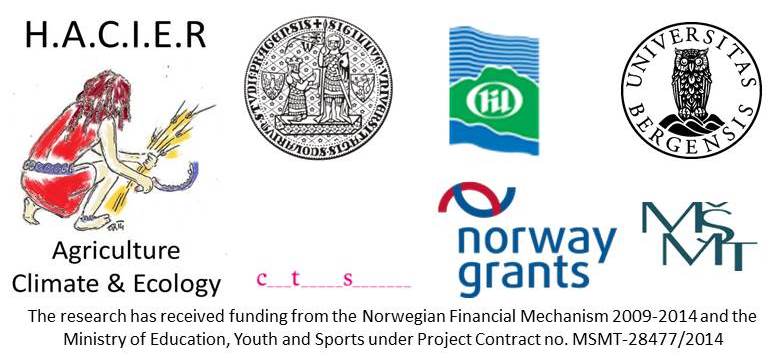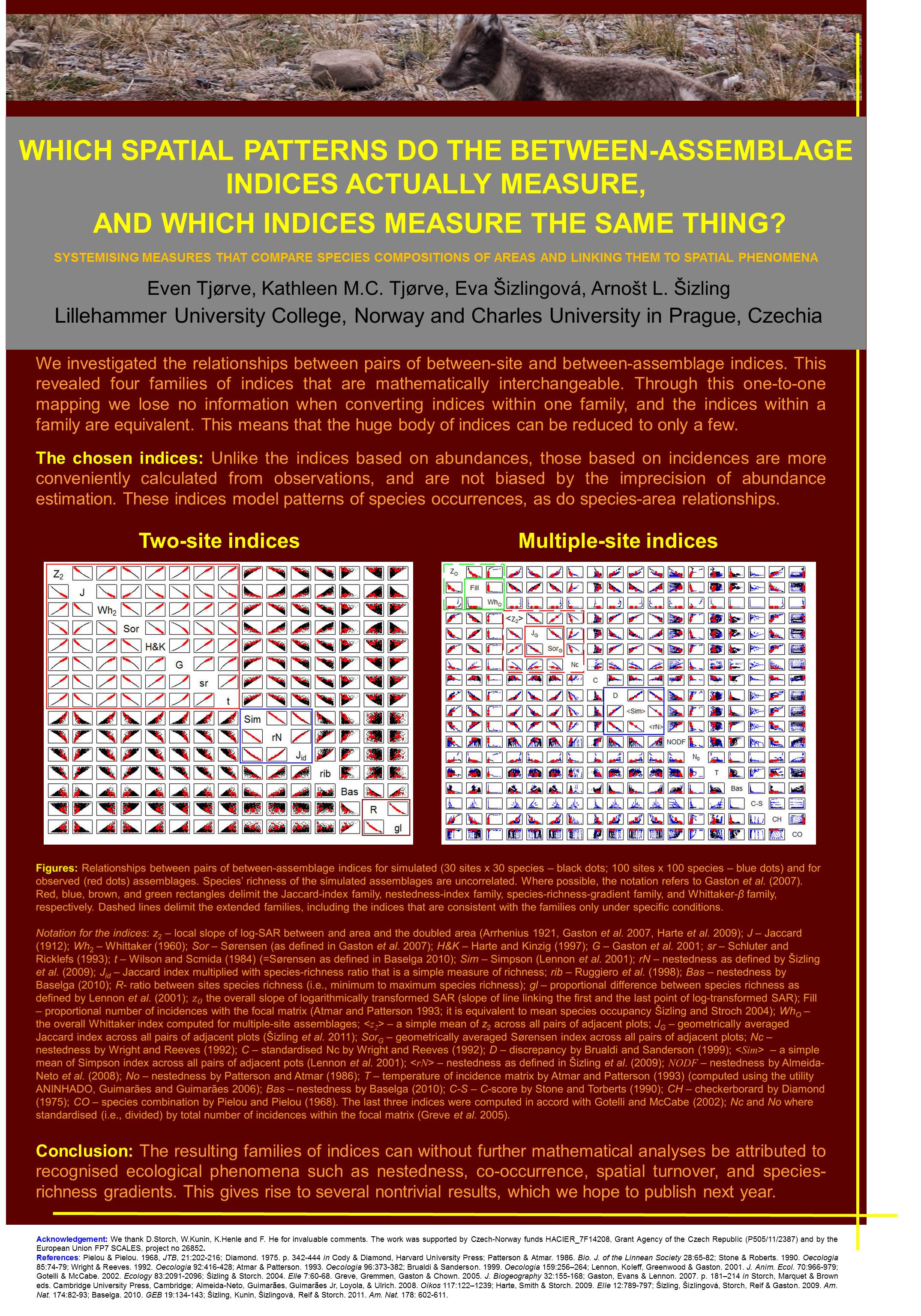We advertised our ideas at the International Biogeography Society meeting in Bayreuth, Germany.
WHICH SPATIAL PATTERNS DO THE INDICES ACTUALLY MEASURE, AND WHICH INDICES MEASURE THE SAME THING? – SYSTEMIZING MEASURES THAT COMPARE SPECIES COMPOSITIONS OF AREAS AND LINKING THEM TO SPATIAL PHENOMENA
Even Tjørve, Kathleen M.C. Tjørve, Eva Šizlingová3, Arnošt L. Šizling
Studying large-scale biodiversity trends and effects of human influence require effective and sound indicators. Indices that compare the composition of species in two or more areas, or compare spatial ranges of two or more species, constitute important tools in conservational biogeography and ecology. They measure and uncover patterns of not only β-diversity, species spatial turnover, species nestedness, co-occurrence and species richness gradients .However, a plethora of indices has bewildered us, leaving few answers to what indices to choose or what they actually measure. Moreover, many indices have been re-invented times over, each time disguised with a different formula. Recent attempts to prune the thicket have not resolved the confusion. We synthesize the ideas behind these indices and introduce a procedure to attribute each index an idea, thereby unveiling which indices measure the same spatial phenomena. First, we describe and delimit five phenomena by their constraints. Secondly, we fit data to 36 indices assessing their scaling properties and derive analytically the relationships between index pairs that scale uniquely. Thirdly, we systemize into four consistent families.


